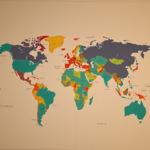Creating Effective Landing Pages for PPC Campaigns

Have you ever clicked on a pay-per-click ad and ended up on a page that seemed disconnected from what you were looking for? The experience left you confused, and more importantly, it made you leave without converting. Effective landing pages bridge this gap, ensuring potential customers find precisely what they expect after clicking on an ad. These pages are not just an extension of your website; they are carefully crafted to lead individuals toward a specific action. In today’s fast-paced digital landscape, mastering the art of landing page creation is important. It is not merely a matter of good design but understanding user intent and behavior to drive conversions and maximize ROI on your PPC campaigns.
The importance of an effective landing page cannot be overstated; it serves as the final step in the conversion journey. Short, to-the-point, and engaging copy complemented by relevant visuals can make all the difference. Each element of the landing page contributes to the seamless experience that every visitor desires. Learn how to create these pages, and you will not only attract more clicks but also nurture these interactions into meaningful conversions. From compelling headlines to strategically placed CTAs, the ingredients of a successful landing page come together to form an irresistible offer for users. Let’s dive into the details to uncover how you can craft landing pages that stop visitors in their tracks and encourage them to take action.
Understanding the Importance of Landing Pages in PPC

Landing pages play a crucial role in the success of PPC campaigns. They are specifically designed to convert visitors into leads or customers by providing a clear pathway toward a desired action. Without a well-optimized landing page, your PPC efforts may drive traffic, but they will not generate the desired results. The effectiveness of a landing page can significantly influence your campaign’s ROI. When potential customers click on your ad, it’s vital that their expectations are met immediately upon landing. Thus, understanding how to create effective landing pages is essential for boosting your PPC results.
Key Elements of an Effective Landing Page

To create an effective landing page for your PPC campaign, certain key elements must be included. These elements will ensure that your page captures the attention of the visitor and leads them toward conversion. Below are the fundamental components to consider when designing your landing page:
- Attention-Grabbing Headlines
- Clear Call to Action (CTA)
- Engaging Visuals
- Trust Signals
A strong headline is essential to capture the attention of your audience. It should be concise, compelling, and relevant to the ad that led the visitor to the landing page. Your CTA should stand out and clearly instruct the visitor on the next steps. Whether it is signing up, making a purchase, or downloading a resource, make it prominent. Moreover, images or videos that align with your campaign’s message can significantly enhance engagement, illustrating the benefits of your product or service. Finally, incorporating elements such as testimonials and reviews builds trust with your audience and reassures them that they are making a safe decision.
Crafting Compelling Content
The content on your landing page should be succinct and persuasive, guiding visitors towards conversion. It is important to highlight the benefits of your offering rather than just listing features. This approach resonates better with potential customers looking for solutions to their problems. By emphasizing how your product or service can make their lives better, you are more likely to encourage them to take action. Remember to keep the text engaging to draw visitors in and retain their attention until they reach the CTA at the bottom. Moreover, identifying your target audience’s pain points and explicitly addressing them can motivate visitors to convert.
Consider these strategies when crafting your landing page content:
- Use simple and clear language.
- Incorporate storytelling elements for relatability.
- Break text into manageable paragraphs for easy reading.
- Add bullet points for key features and benefits.
Optimizing for Mobile Devices
With the increasing use of mobile devices for browsing, optimizing your landing pages for mobile is essential. Ensure that your landing page adapts to various screen sizes seamlessly. A responsive design enhances user experience and reduces bounce rates. Remember that more than half of all internet traffic comes from mobile users; thus, failing to optimize can lead to significant overall losses. Additionally, mobile users often exhibit different behavior patterns, so your content should be structured accordingly. Consider the following factors for mobile optimization:
- Fast loading times.
- Touch-friendly buttons for easy navigation.
- High-quality images that load well on smaller screens.
A/B Testing Your Landing Pages
To increase the effectiveness of your landing pages, conduct A/B testing on various elements. This process allows you to identify which variations resonate most with your audience and lead to higher conversions. Focus on crucial metrics such as conversion rates, click-through rates, and time on page to determine which version performs better. Below is a simple table that can assist you in tracking key metrics during your A/B tests:
| Metric | Version A | Version B |
|---|---|---|
| Conversion Rate | 5% | 7% |
| Click-Through Rate | 10% | 12% |
| Average Time on Page | 30 sec | 45 sec |
Analyzing the data will help you identify areas for improvement and refine your landing page for optimal performance. Repeating this process regularly ensures that your landing pages remain effective and adapt to changing market trends. Remember, the more you test, the more you learn about what your audience responds to, which ultimately leads to higher conversion rates.
Conclusion
Creating effective landing pages for PPC campaigns is a multifaceted process that involves strategic planning, compelling content, and continuous testing. By focusing on key elements such as strong headlines, clear CTAs, engaging visuals, and trust signals, you can significantly improve your conversion rates and the overall success of your PPC efforts. Ultimately, a well-crafted landing page acts as a bridge between your ad and the visitor’s goal, ensuring that expectations are met in a concise manner. As you apply these strategies, you will see tangible improvements in your marketing results. The path to a successful PPC campaign is paved with effective landing pages, and now you are equipped with the knowledge to build them.
Frequently Asked Questions
- What is a landing page in PPC?
A landing page is a standalone web page designed specifically for a marketing or advertising campaign, where visitors ‘land’ after clicking an ad. - How can I improve my landing page conversion rate?
You can improve your conversion rate by optimizing for mobile, using strong CTAs, A/B testing different elements, and focusing on clear benefits above features. - Why are trust signals important on landing pages?
Trust signals, such as testimonials and reviews, help build credibility and make visitors feel secure in their decision to engage further with your brand. - What key metrics should I track for my landing pages?
Key metrics to track include conversion rates, bounce rates, click-through rates, and average time spent on the page. - Is A/B testing necessary for landing pages?
Yes, A/B testing helps identify which elements work best for your audience, allowing for data-driven improvements to optimize performance.

